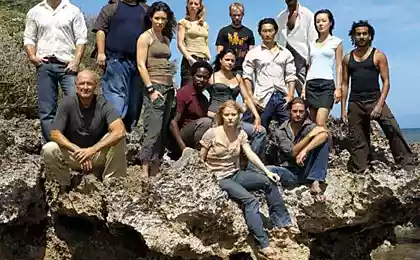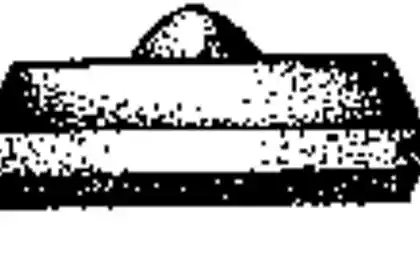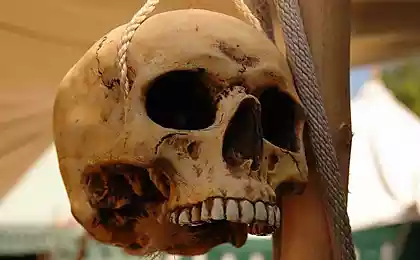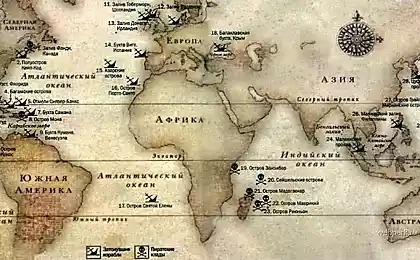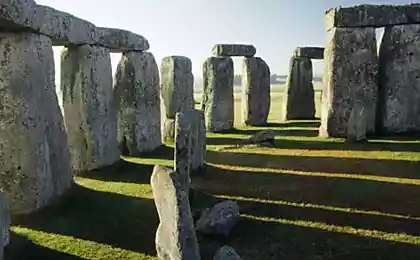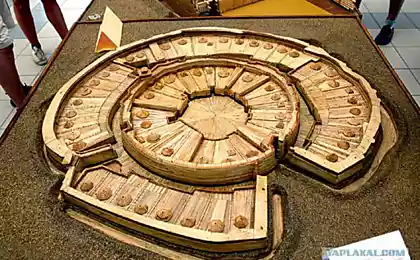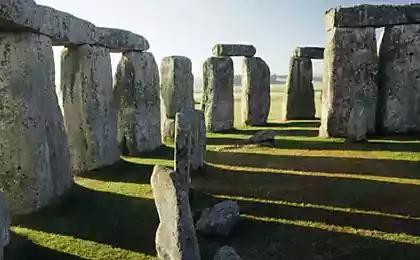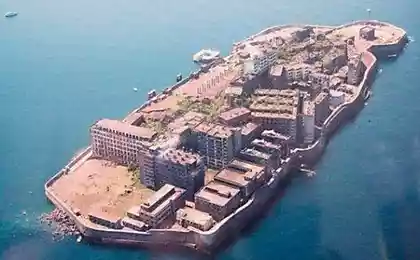607
Ancient tower-Nuraghe in Sardinia
In Sardinia you can find traces of different ancient civilizations: Phoenician ruins and Roman cities, Romanesque churches, Gothic churches, built in the Baroque style.
No one can say exactly when the island appeared first settlers, but it is known that, while Europe was in a state of barbarism, in Sardinia there existed a highly developed civilization, who knows the secrets of construction and metal processing. It was the descendants of nuragici — the mysterious people who lived there in the second Millennium BC.
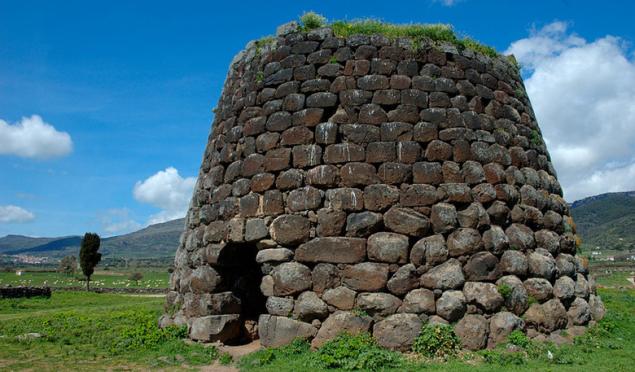
Nuraghe
What were scientists surprised when they managed to recreate the original look nuragical fortress! She was an exact replica of medieval feudal castles belonging to the bronze age. Who built in Sardinia these locks remains a mystery.
This island the ancient Greeks called Andalites. Perhaps because it really resembles the shape of sandals. But locals still are of the opinion that it was here that the Lord first set foot on the Earth, and His trail became an island.
In the history of Sardinia, who not only tried to conquer it: the Phoenicians, Romans, Arabs, Italians, Austrians, Spaniards... Some invaders were followed by others, until, until in 1861 the island became part of United Italy. Now meet the real Sardinians difficult, they lead a secluded life, live in remote areas of the island are sheep and are not too keen of strangers.
GIANT TOMBS
Currently in Sardinia found about 300 tombs, which is a huge structure with a length up to 15 m and a height of about 5 m. Scientists believe that the ancestors of the Sardinians settled on the island in the XIV-XIII centuries BC Quite possibly, it was the same Shardeni, or sardine, in other words, "peoples of the sea", which was so afraid of the Egyptian pharaohs.
In their era there were "giants tombs". Someone seems that there is nothing surprising in such constructions there, because of their worldwide spread thousands. But these are made of well-crafted multi-ton blocks, and the Central part, where the carved image, gently rounded. To the question, what technology were these mysterious tomb, there is no answer until now.
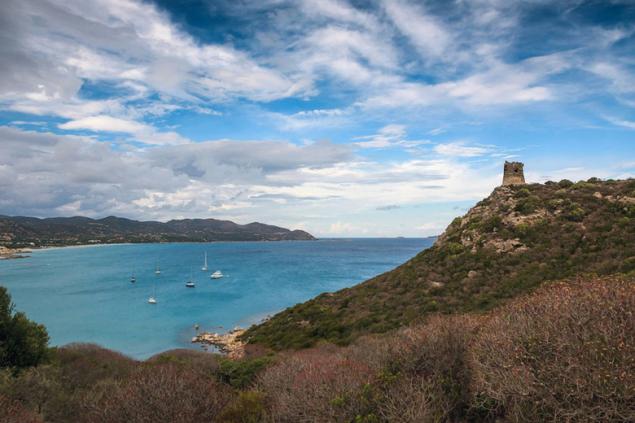
TRACES OF A LOST CIVILIZATION
Even in Sardinia there are no less mysterious and impressive objects, of which to date there are about 8 thousand. This is the Nuraghi, the megalithic towers having the shape of a truncated cone, a height of 20 m, resembling bee hives. Nuraghe was built of huge stone blocks carved out of different hardness and strength of rocks.
The blocks fit round and round, one on the other. In addition, for bonds they did not used any binder solution, the construction was held by its own weight. Feature of the masonry of the Nuraghe consisted in the fact that each subsequent series has had a slight shift to the center with respect to the previous one.
The top of the truncated cone, apparently, served as a terrace. To get to it was via a spiral staircase. Covered Nuraghe through narrow openings in the walls. Most interesting is that approximately at the height of 6 m was located the exit. Most likely, it was an emergency exit in case of danger.
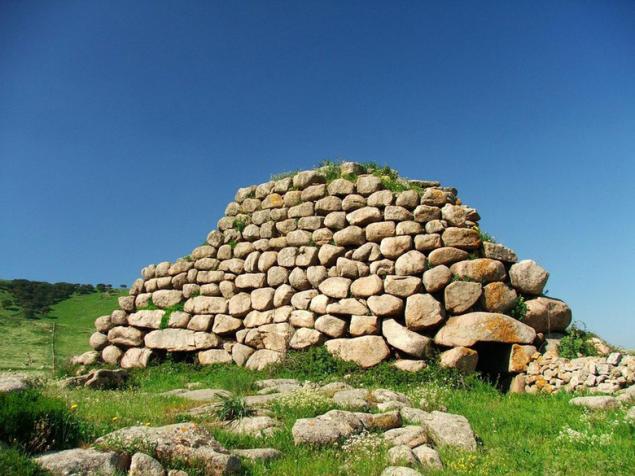
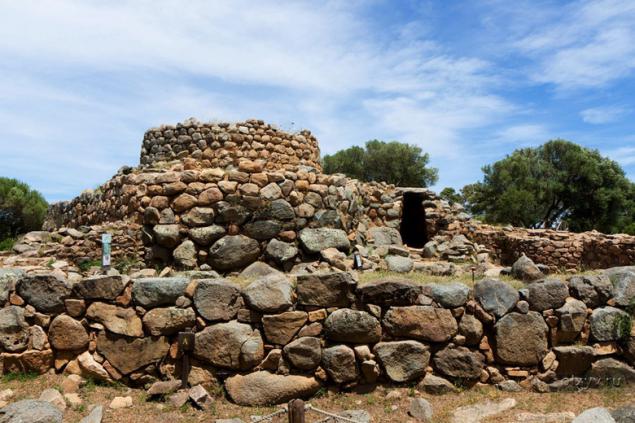
The archaeologists came to the conclusion that there was used either rope ladders or drawbridges. The usual entrance to the Nuraghe, as a rule, was located on the South side. Here in the room round shape led wide corridor. The ceilings of the rooms, which could be one of the few Nuraghe, was vaulted.
During the excavations failed to establish that the Nuraghe were built entire complexes. Initially constructed Central building, and around it was set a few towers, different in height. They are all connected by ramparts. In addition, in such cities was more "pin-Netty" — small round huts. They were standing so close that between them you could barely squeeze through.
A well-known researcher Francesco Casula once said, "We know about the era of the Nuraghi much, but we know almost nothing about nuragica. Ancient people was and remains one of the most mysterious inhabitants of the planet Earth." And he's right. How well studied Nuraghe, so almost nothing is known about the ancient people who inhabited Sardinia in the II Millennium BC
Who knows, maybe the word "Nuraghe" many villages in Sardinia have in their name the root "Nur", meaning high tower. In some places, the Nuraghe, and to this day are called monuments.
BURIAL OF THE NURAGHE
What is now left is only a small part of the Nuraghe, which existed on the island in ancient times. It is believed that there were about 30 thousand. Many were destroyed by time, and some still hiding under the ground. Known cases when Nuraghe grew out of the ground overnight.
In the evening it was a level place, and in the morning, like magic, it appeared the tower. In 1949 near the village of Barumini had a big flood that eroded one of the hills. And the surface was a whole village of Nuraghe, hidden on the ground for more than 25 centuries.
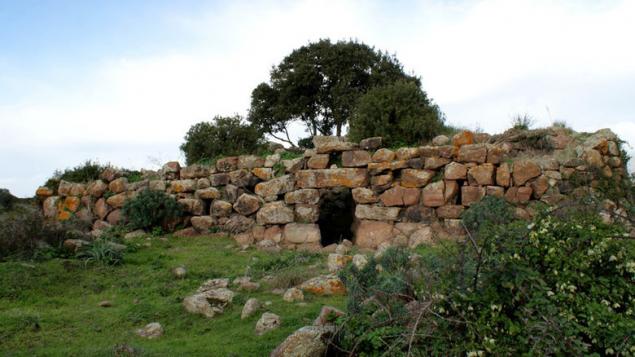
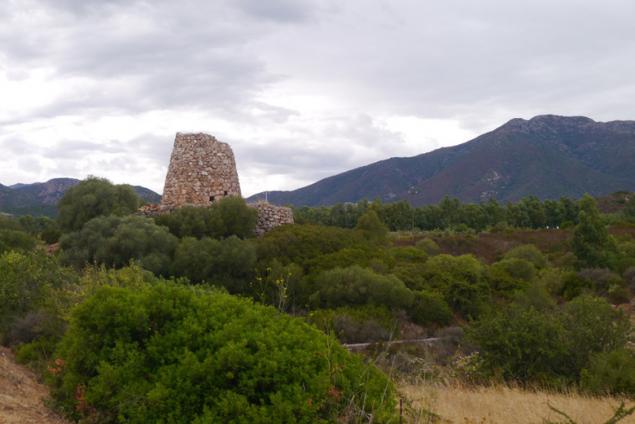
Presumably the Nuragic culture began to decline in the days of the Phoenicians. As far as we know, at that time Sardinia initially was embroiled in the war, and later became subordinate to Rome. Along with the Nuragic culture disappeared Nuraghe.
Some researchers believe that the builders of the Nuraghi buried their towers. Otherwise, why are they found in the mounds that have the same shape? Initially, all the inputs were carefully bricked with stone slabs, and then all covered with earth.
Here are just a number not discovered nor the pits, no pits. So the question is, where nuragici took the land, still has no answer. Because the land had very much. Assuming that it were brought from somewhere else, then again, what technique they used and where they could take so much land?
WHY?
No one can say for sure about the purpose of the Nuraghi. There is a theory that at first they had a defensive value, and then became ritual centers. Maybe they were built with different purposes. Some Nuraghi were built on slopes and others on the tops of hills or mountains. But always in places with a panoramic view of the area, as if to control the roads leading to the Nuraghe.
Sometimes the towers are called temples, dwellings, residences of the rulers, a meeting place of chiefs. But it is unlikely that any ruler would be handy in this high position, to manage people.
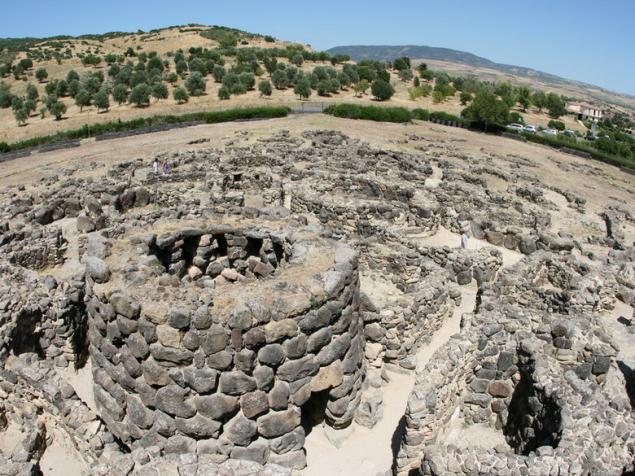
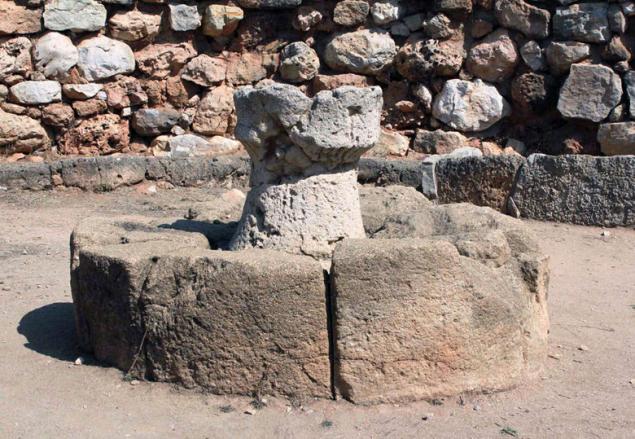
And yet most scientists believe that the Nuraghe were multifunctional. Those that stand on the hilltops and look simpler, most likely, was the observation towers. Located in the coastal zone structures apparently served as observation points over the sea, and sometimes housing for arrivals by sea traders.
But there is a Nuraghe more complex designs, that they could be used for meetings, to be the residence of the rulers or of the cult place. But the fact that the towers were built with a sense, of course.
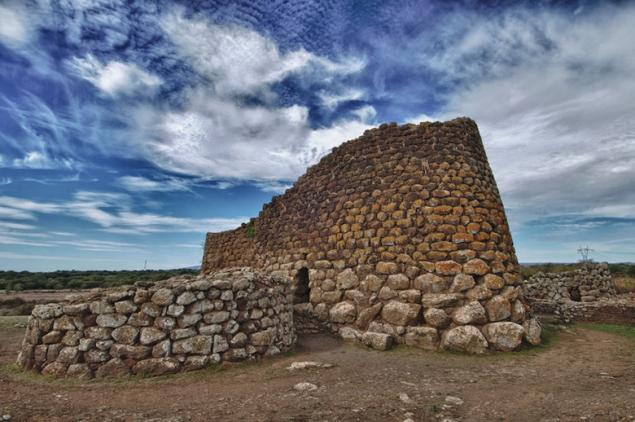
In the study of the Nuraghi in nearly all of them was discovered a special niche, in which there were the horns of a deer. Maybe the deer were considered sacred animals, the guardian of temples. Assumptions there are a great many, but no exact answer.
Ancient people who built the nuraghes could leave in them the descendants of some information, signs, knowledge of which we cannot yet decipher. Somehow the local authorities pay little attention to the study of the towers. For example it would be possible to photograph them from the plane, and the connecting point of location of the Nuraghe, to obtain a certain image scheme. And suddenly she lifted the veil of mystery ancient builders?
BRONZE TRACES
I must say that, besides the Nuraghi, from the lost civilization preserved bronze statuette bronzetto. Archaeologists and black diggers find figures, depicting chiefs, hunters, animals. Of special interest are the bronze statues of creatures that looked like women in suits.
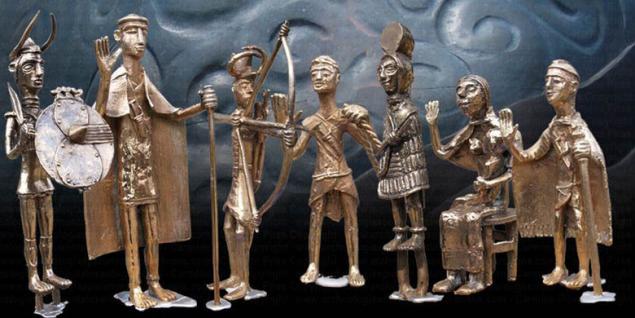
Who have seen and portrayed the ancient Sardinians, who brought them knowledge, who helped achieve a high level of development of metallurgy? The answer is no. But bronzetto is possible to draw some conclusions about the lives of the people. They shot from a bow, used to protect the shields, the soldiers apparently enjoyed them more respect. In addition, many scientists believe that it is the Nuraghe was one of the originators of European civilization.published
Also interesting: Russian catch phrase: the secret meaning
Badgery: as fought with hellish heat in the ancient world
Source: paranormal-news.ru/news/drevnie_bashni_nuragi_na_sardinii/2016-08-12-12520
No one can say exactly when the island appeared first settlers, but it is known that, while Europe was in a state of barbarism, in Sardinia there existed a highly developed civilization, who knows the secrets of construction and metal processing. It was the descendants of nuragici — the mysterious people who lived there in the second Millennium BC.

Nuraghe
What were scientists surprised when they managed to recreate the original look nuragical fortress! She was an exact replica of medieval feudal castles belonging to the bronze age. Who built in Sardinia these locks remains a mystery.
This island the ancient Greeks called Andalites. Perhaps because it really resembles the shape of sandals. But locals still are of the opinion that it was here that the Lord first set foot on the Earth, and His trail became an island.
In the history of Sardinia, who not only tried to conquer it: the Phoenicians, Romans, Arabs, Italians, Austrians, Spaniards... Some invaders were followed by others, until, until in 1861 the island became part of United Italy. Now meet the real Sardinians difficult, they lead a secluded life, live in remote areas of the island are sheep and are not too keen of strangers.
GIANT TOMBS
Currently in Sardinia found about 300 tombs, which is a huge structure with a length up to 15 m and a height of about 5 m. Scientists believe that the ancestors of the Sardinians settled on the island in the XIV-XIII centuries BC Quite possibly, it was the same Shardeni, or sardine, in other words, "peoples of the sea", which was so afraid of the Egyptian pharaohs.
In their era there were "giants tombs". Someone seems that there is nothing surprising in such constructions there, because of their worldwide spread thousands. But these are made of well-crafted multi-ton blocks, and the Central part, where the carved image, gently rounded. To the question, what technology were these mysterious tomb, there is no answer until now.

TRACES OF A LOST CIVILIZATION
Even in Sardinia there are no less mysterious and impressive objects, of which to date there are about 8 thousand. This is the Nuraghi, the megalithic towers having the shape of a truncated cone, a height of 20 m, resembling bee hives. Nuraghe was built of huge stone blocks carved out of different hardness and strength of rocks.
The blocks fit round and round, one on the other. In addition, for bonds they did not used any binder solution, the construction was held by its own weight. Feature of the masonry of the Nuraghe consisted in the fact that each subsequent series has had a slight shift to the center with respect to the previous one.
The top of the truncated cone, apparently, served as a terrace. To get to it was via a spiral staircase. Covered Nuraghe through narrow openings in the walls. Most interesting is that approximately at the height of 6 m was located the exit. Most likely, it was an emergency exit in case of danger.


The archaeologists came to the conclusion that there was used either rope ladders or drawbridges. The usual entrance to the Nuraghe, as a rule, was located on the South side. Here in the room round shape led wide corridor. The ceilings of the rooms, which could be one of the few Nuraghe, was vaulted.
During the excavations failed to establish that the Nuraghe were built entire complexes. Initially constructed Central building, and around it was set a few towers, different in height. They are all connected by ramparts. In addition, in such cities was more "pin-Netty" — small round huts. They were standing so close that between them you could barely squeeze through.
A well-known researcher Francesco Casula once said, "We know about the era of the Nuraghi much, but we know almost nothing about nuragica. Ancient people was and remains one of the most mysterious inhabitants of the planet Earth." And he's right. How well studied Nuraghe, so almost nothing is known about the ancient people who inhabited Sardinia in the II Millennium BC
Who knows, maybe the word "Nuraghe" many villages in Sardinia have in their name the root "Nur", meaning high tower. In some places, the Nuraghe, and to this day are called monuments.
BURIAL OF THE NURAGHE
What is now left is only a small part of the Nuraghe, which existed on the island in ancient times. It is believed that there were about 30 thousand. Many were destroyed by time, and some still hiding under the ground. Known cases when Nuraghe grew out of the ground overnight.
In the evening it was a level place, and in the morning, like magic, it appeared the tower. In 1949 near the village of Barumini had a big flood that eroded one of the hills. And the surface was a whole village of Nuraghe, hidden on the ground for more than 25 centuries.


Presumably the Nuragic culture began to decline in the days of the Phoenicians. As far as we know, at that time Sardinia initially was embroiled in the war, and later became subordinate to Rome. Along with the Nuragic culture disappeared Nuraghe.
Some researchers believe that the builders of the Nuraghi buried their towers. Otherwise, why are they found in the mounds that have the same shape? Initially, all the inputs were carefully bricked with stone slabs, and then all covered with earth.
Here are just a number not discovered nor the pits, no pits. So the question is, where nuragici took the land, still has no answer. Because the land had very much. Assuming that it were brought from somewhere else, then again, what technique they used and where they could take so much land?
WHY?
No one can say for sure about the purpose of the Nuraghi. There is a theory that at first they had a defensive value, and then became ritual centers. Maybe they were built with different purposes. Some Nuraghi were built on slopes and others on the tops of hills or mountains. But always in places with a panoramic view of the area, as if to control the roads leading to the Nuraghe.
Sometimes the towers are called temples, dwellings, residences of the rulers, a meeting place of chiefs. But it is unlikely that any ruler would be handy in this high position, to manage people.


And yet most scientists believe that the Nuraghe were multifunctional. Those that stand on the hilltops and look simpler, most likely, was the observation towers. Located in the coastal zone structures apparently served as observation points over the sea, and sometimes housing for arrivals by sea traders.
But there is a Nuraghe more complex designs, that they could be used for meetings, to be the residence of the rulers or of the cult place. But the fact that the towers were built with a sense, of course.

In the study of the Nuraghi in nearly all of them was discovered a special niche, in which there were the horns of a deer. Maybe the deer were considered sacred animals, the guardian of temples. Assumptions there are a great many, but no exact answer.
Ancient people who built the nuraghes could leave in them the descendants of some information, signs, knowledge of which we cannot yet decipher. Somehow the local authorities pay little attention to the study of the towers. For example it would be possible to photograph them from the plane, and the connecting point of location of the Nuraghe, to obtain a certain image scheme. And suddenly she lifted the veil of mystery ancient builders?
BRONZE TRACES
I must say that, besides the Nuraghi, from the lost civilization preserved bronze statuette bronzetto. Archaeologists and black diggers find figures, depicting chiefs, hunters, animals. Of special interest are the bronze statues of creatures that looked like women in suits.

Who have seen and portrayed the ancient Sardinians, who brought them knowledge, who helped achieve a high level of development of metallurgy? The answer is no. But bronzetto is possible to draw some conclusions about the lives of the people. They shot from a bow, used to protect the shields, the soldiers apparently enjoyed them more respect. In addition, many scientists believe that it is the Nuraghe was one of the originators of European civilization.published
Also interesting: Russian catch phrase: the secret meaning
Badgery: as fought with hellish heat in the ancient world
Source: paranormal-news.ru/news/drevnie_bashni_nuragi_na_sardinii/2016-08-12-12520
